This post may contain affiliate links. Please read our disclosure policy.
This small loaf French bread recipe makes a single loaf with a crisp, golden crust and a soft, airy interior. It’s simple to make and perfectly sized for smaller households, giving you fresh, bakery-quality bread without the extra leftovers. Whether you’re an experienced baker or new to breadmaking, this recipe is approachable, reliable, and easy to customize.
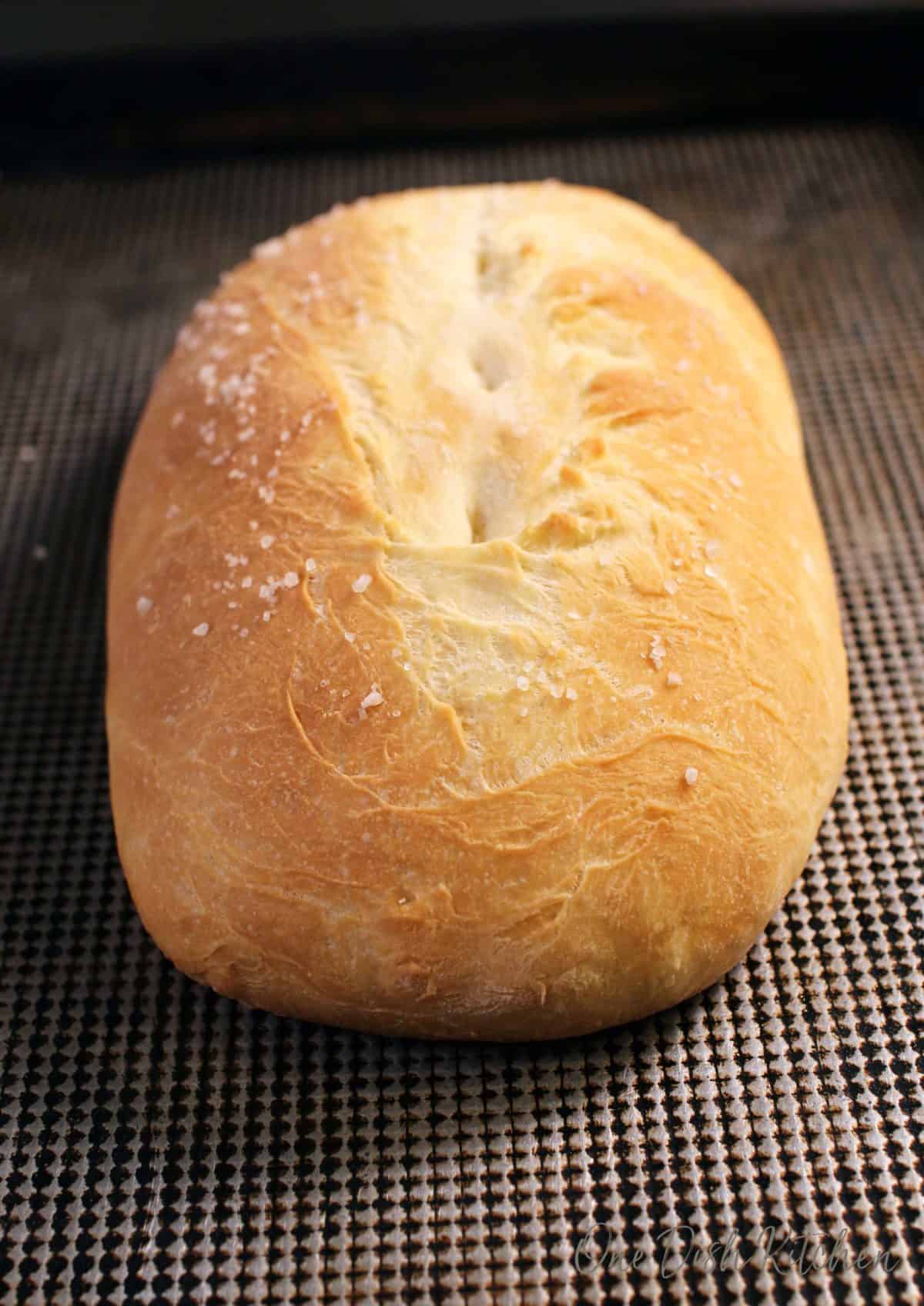
This homemade bread is incredibly versatile! It’s great for dipping into a bowl of French Onion Soup, pairing with hearty Chili, Red Beans and Rice, or serving alongside a comforting Pot Roast. Sometimes, simple is best—spread a little homemade jam on a slice and enjoy. No matter how you use it, this small loaf of French bread is always delicious!
Why You’ll Love This Recipe
- Simple to Make: Whether mixing by hand or with a stand mixer, this bread dough comes together easily.
- Versatile: This dough bakes beautifully in any shape you choose.
- Perfectly Portioned: Designed for smaller households, it makes just one small loaf of French bread—no excess bread to store.
- Customizable: Add ingredients like olives, walnuts, roasted garlic, or fresh herbs to suit your taste.
- Beginner-Friendly: This recipe makes breadmaking approachable and easy.
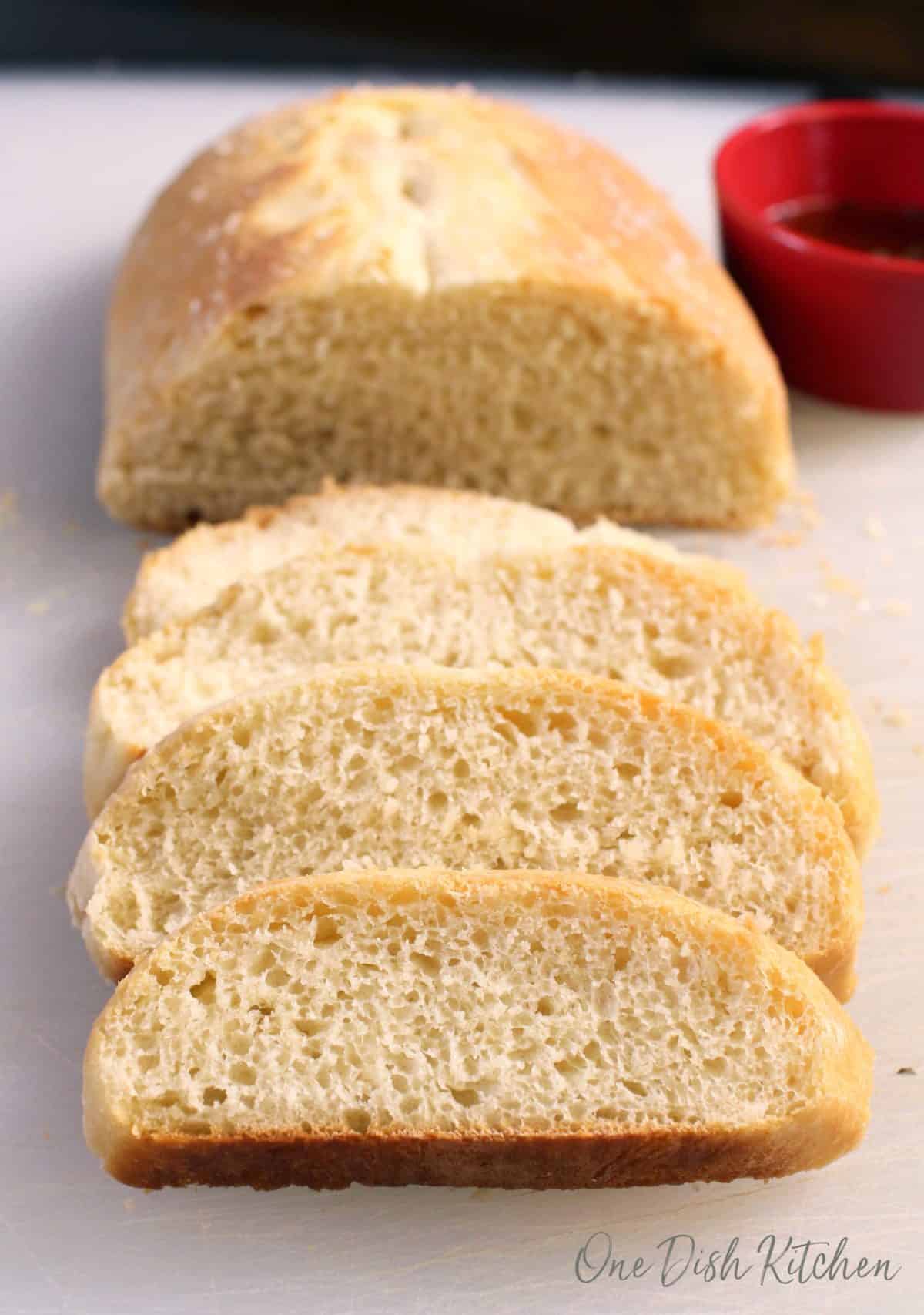
Developing this small batch French bread recipe has been a rewarding journey. While I’ve been baking French bread for years, scaling it down to create a smaller loaf came with its own set of challenges. Working with yeast can feel a bit daunting at first—getting the dough to rise properly can be tricky. That’s why this recipe is designed to be simple and approachable, giving you confidence at every step. To make things even easier, I’ve included step-by-step photos to guide you. This recipe is reliable, easy to follow, and yields a delicious, small loaf of bread that I’m sure you’ll enjoy!
Ingredients
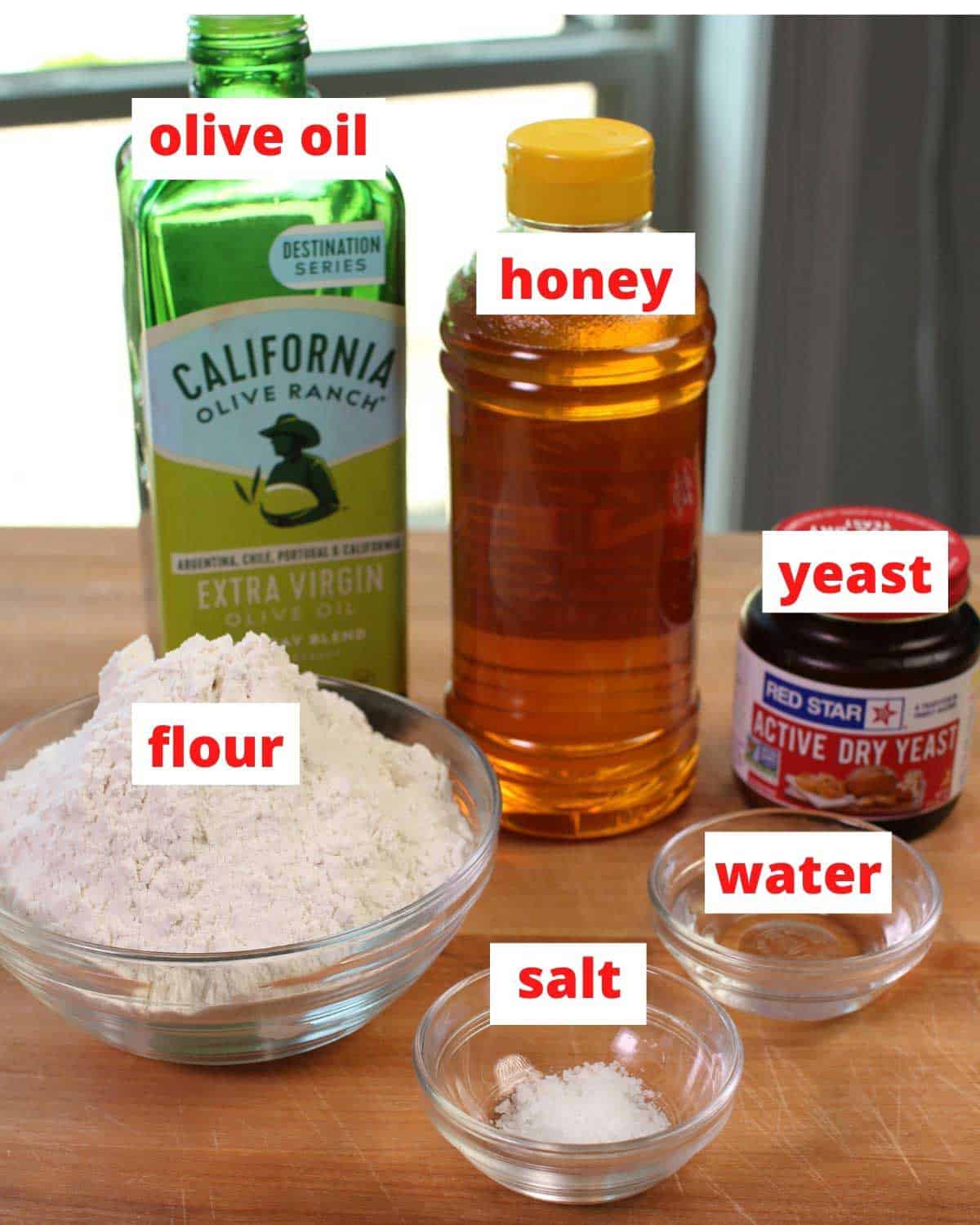
If you have any ingredients leftover from this small loaf bread recipe, check out our Leftover Ingredients Recipe Finder.
- Flour: You can use either all-purpose flour or bread flour in this recipe. All-purpose flour is versatile and works well, while bread flour’s higher protein content gives the dough more strength and results in a higher rise. Note that bread flour absorbs more liquid, which makes the dough slightly firmer.
- Water: Use warm water, between 90-100°F, to properly activate the yeast.
- Salt: Essential for flavor and to control the yeast. Without salt, the bread may rise too quickly and taste bland.
- Active Dry Yeast: This recipe calls for active dry yeast, which needs to be dissolved in water. Check that your yeast is fresh for the best results.
- Honey: Adds a subtle sweetness that enhances the bread’s flavor more effectively than granulated sugar.
- Olive Oil: Use extra virgin olive oil for its rich flavor and nutritional benefits. A lighter olive oil or vegetable oil can also work.
How To Make A Small Loaf Of French Bread
These step-by-step photos and instructions help you visualize how to make this small batch French bread recipe. See the recipe box below for ingredient amounts and full recipe instructions.
- Prepare the Dough
- Combine Ingredients: In a large mixing bowl, add flour, salt, honey, olive oil, and water. Sprinkle yeast over the water to dissolve. Mix using a stand mixer or by hand. If using a stand mixer, start with the paddle attachment until the dough begins to come together.
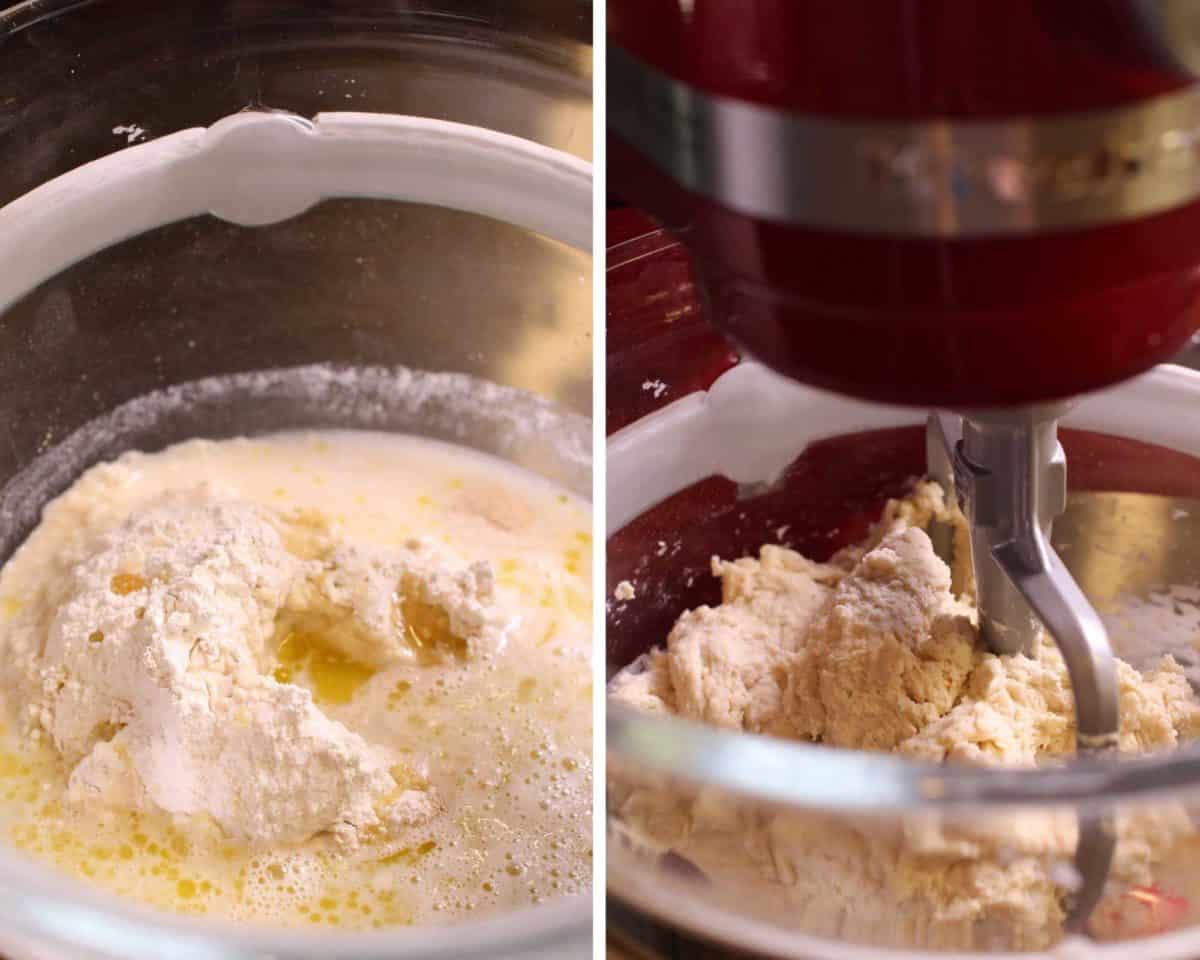
- Knead the Dough: Switch to the dough hook and knead for about 10 minutes, developing the gluten for elasticity. Avoid overmixing. To check readiness, perform the “windowpane test” by stretching a small piece of dough—if it forms a thin, translucent sheet without tearing, it’s ready. If it tears, knead a little longer.
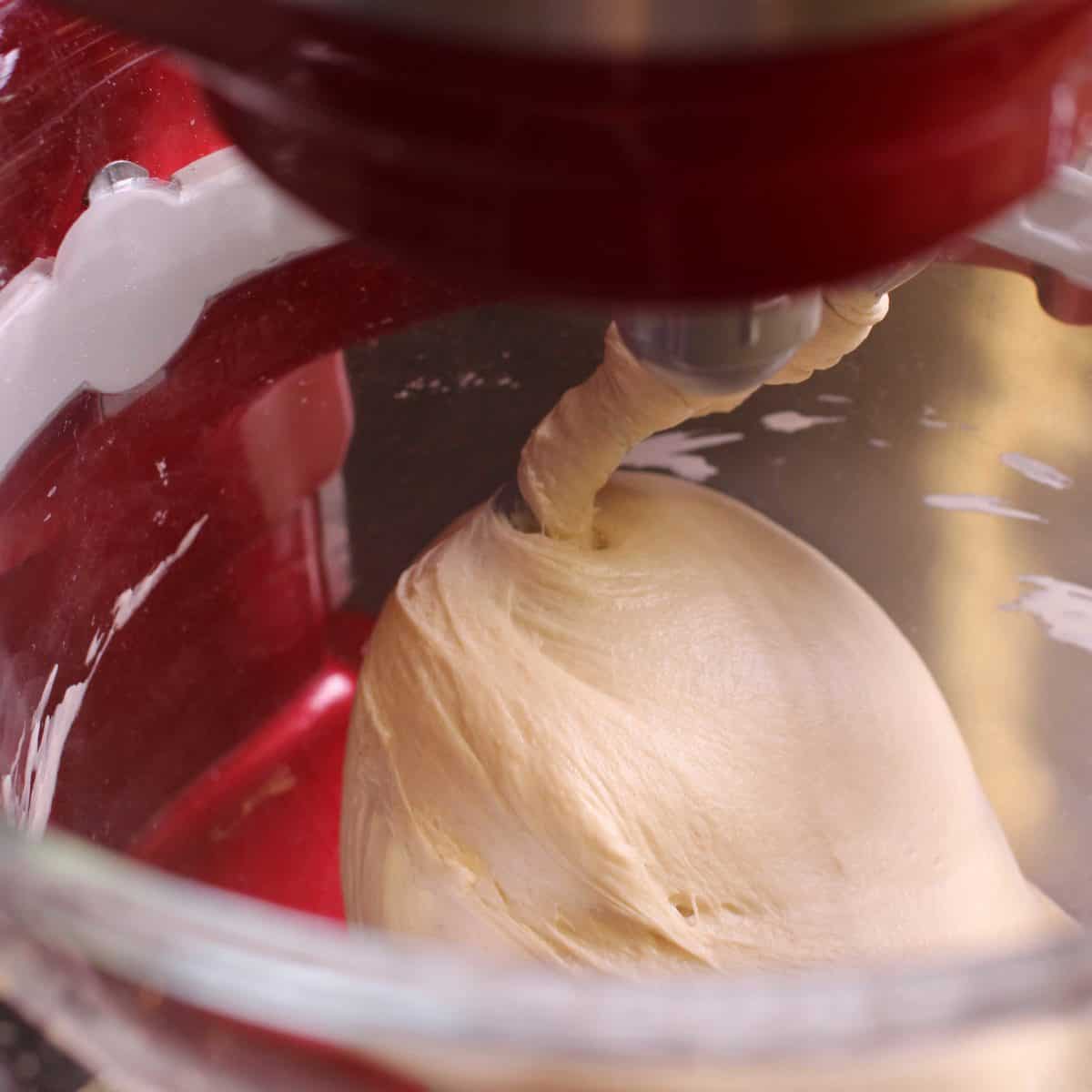
- First Rise
- Let the Dough Rise: Cover the bowl with plastic wrap and let the dough rise until it doubles in size, about 1 hour depending on room temperature. This step enhances flavor and texture.
- Check for Readiness: Lightly press a finger into the dough. If it resists slightly but doesn’t spring back, it’s ready. If it springs back, let it rise a bit longer.
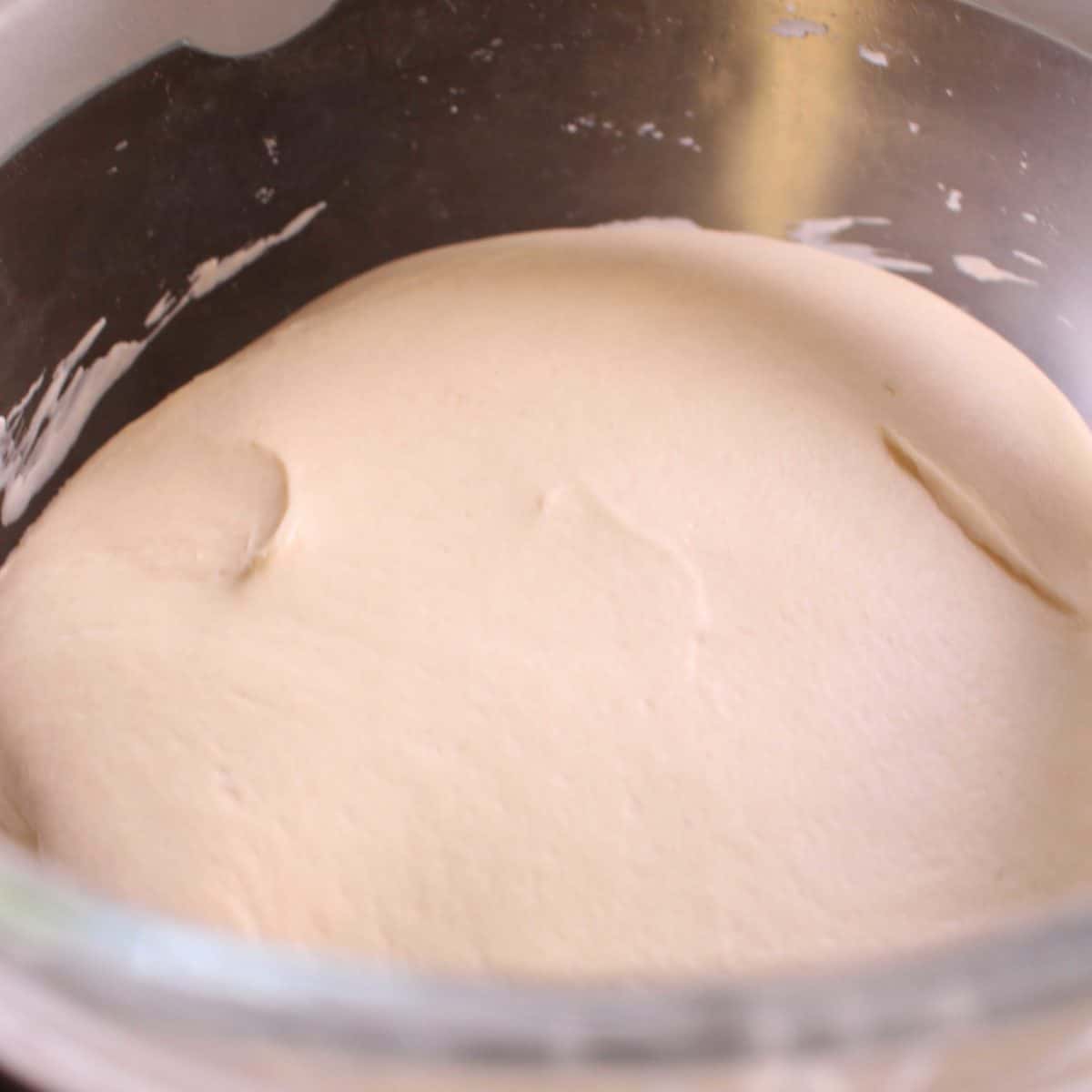
- Rest the Dough
- Knead and Rest: Turn the dough onto a lightly floured surface. Gently knead to release gas and redistribute the yeast. Cover with a dish towel and let it rest for 10-15 minutes.
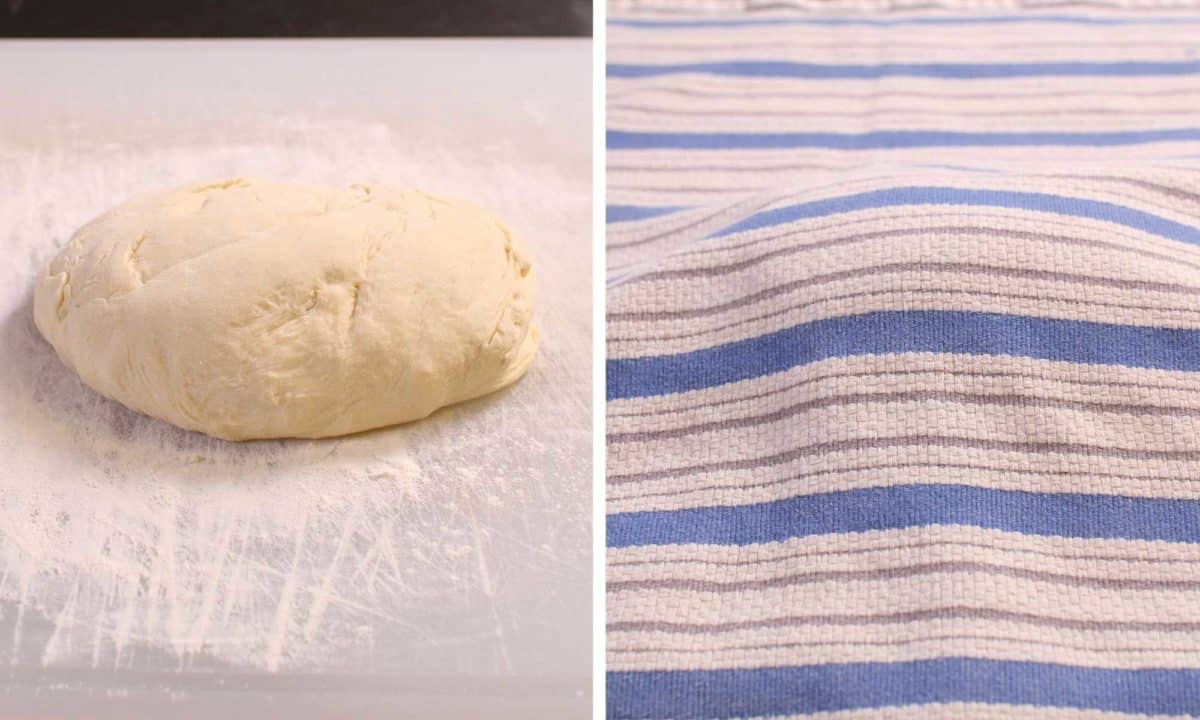
- Shape and Second Rise
- Shape the Dough: Shape into an oval or round loaf (boule). For a baguette, form a 6×3-inch rectangle. Place on a baking sheet, cover with a dish towel, and let it rise for about 1 hour.

- Bake the Bread
- Preheat and Score: Preheat the oven to 400°F (200°C). Use a sharp knife to make a slash across the top of the dough to control expansion during baking.
- Brush and Bake: Brush the top with olive oil and sprinkle with kosher salt. Bake for 18-20 minutes, or until the crust is golden brown.

This recipe is my favorite for making a quick, delicious small loaf—just the right size for smaller households!
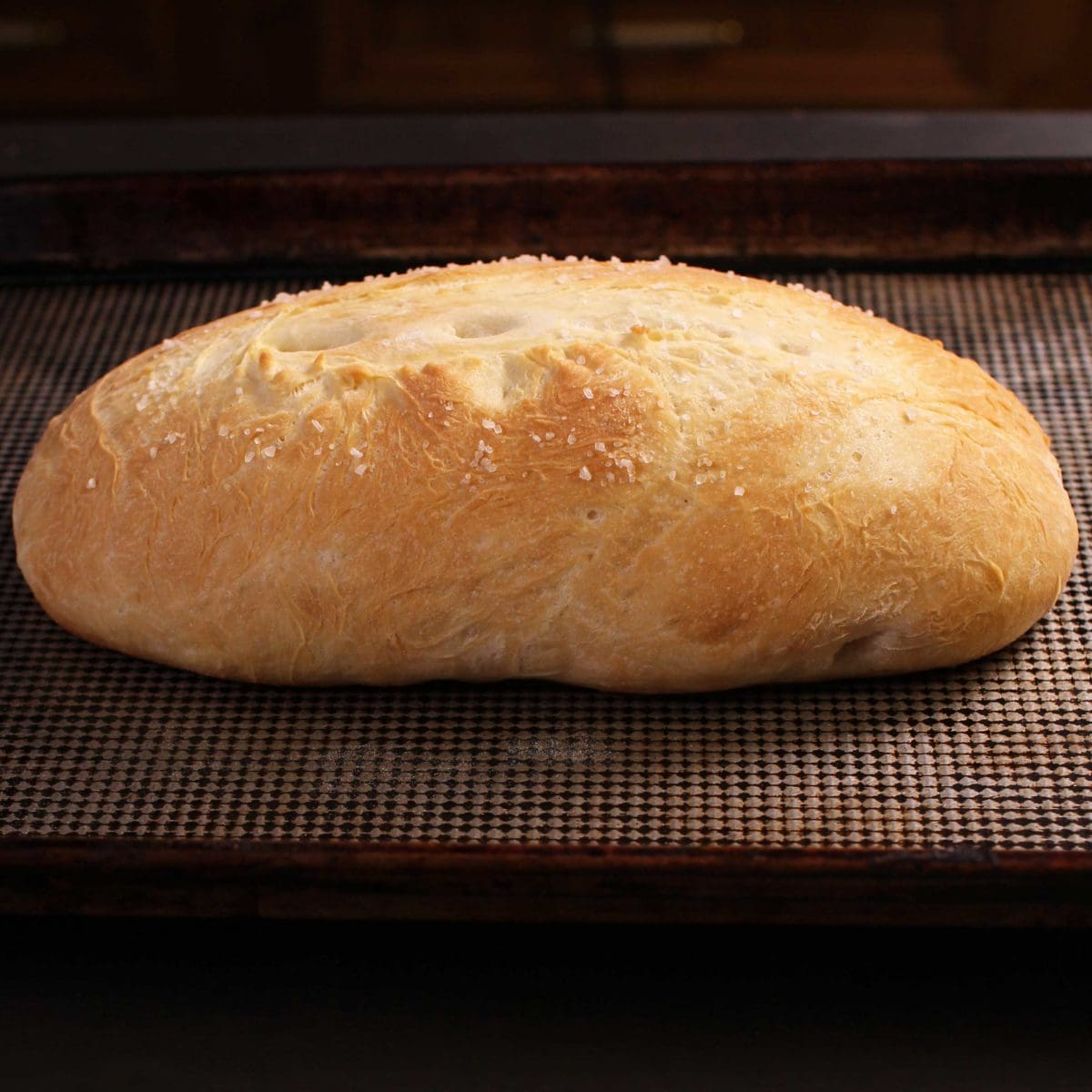
Expert Tips
- Using Yeast: This recipe uses active dry yeast, which needs to be dissolved in warm water. If using instant yeast, mix it directly with the other ingredients—no need to dissolve it first.
- Sticky Dough: If the dough feels sticky, sprinkle a little flour on your hands and the surface. Add more flour gradually, one tablespoon at a time, until the dough is smooth and elastic.
- Dough Not Rising: If the dough isn’t rising, check the yeast and water temperature—warm water (not hot or cold) is key. If the room is too cool, let the dough rise in a slightly warm oven. Preheat for 1 minute, turn it off, and place the dough inside, or leave the oven light on for gentle warmth.
- Doughy Bread: Bread that’s doughy in the middle may need more baking time or a slightly higher oven temperature. Tap the bottom of the loaf—it should sound hollow and feel light when fully baked.
- Measuring Flour: For best results, weigh the flour (10 ounces or 285 grams). If you don’t have a scale, fluff the flour, spoon it into a dry measuring cup, and level it off with a knife.
Bread Dough Variations
This basic bread dough is versatile and easy to customize with flavorful add-ins. Here are two ideas to elevate your loaf:
- Olive-Walnut Bread: Mix in 1/8 cup of chopped kalamata olives and 1/8 cup of chopped walnuts during the dough mixing process. The olives add a tangy flavor and vibrant color, while the walnuts provide a nutty crunch. After baking, brush the loaf with melted butter mixed with 1/4 teaspoon of garlic salt for added flavor.
- Rosemary and Roasted Garlic Bread: Add 3-4 roasted garlic cloves (whole or chopped) and 1/2 tablespoon of chopped rosemary to the dough just before shaping for the second rise. To roast garlic, cut the top off a garlic head, drizzle with 1 tablespoon of olive oil, wrap in foil, and roast at 400°F for 30-35 minutes until tender.
Delicious Ways To Enjoy Your French Bread
This crusty French bread isn’t just for enjoying on its own—it’s versatile and can be used in many recipes. Pair it with Tortellini Soup or Chicken Stew, or simply dip it in olive oil for a quick snack. Here are some creative ways to use this bread:

Frequently Asked Questions
Yes! You can mix and knead the dough by hand. It will take about 15-20 minutes of kneading until the dough is smooth and elastic, but it’s completely doable.
Yes, you can use the same amount of instant yeast. There’s no need to dissolve it in water—just mix it directly with the dry ingredients.
If your dough isn’t rising, the yeast might be inactive, or the room may be too cold. Try placing the bowl in a slightly warm oven (preheated for 1 minute, then turned off) to help it along.
Store the bread in a resealable bag or wrapped in a kitchen towel at room temperature for up to 2 days. For longer storage, freeze it in an airtight bag for up to 3 months.
Yes, you can double the ingredients to make two loaves. Be sure to monitor the dough’s rising and kneading times, as they may vary slightly with the larger batch.
I haven’t tested this recipe in a bread machine, so adjustments may be needed. If you’d like to try, King Arthur Flour offers a helpful guide on adapting bread recipes for bread machines.
For this French bread recipe, I use the KitchenAid 6-quart stand mixer from our store page—it’s one of my favorites.
Ways To Use Leftover Ingredients
If you have any ingredients leftover from this recipe, check out our Leftover Ingredients Recipe Finder or you might like to consider using them in any of these single serving and small batch recipes:
If you’ve tried this small loaf French bread recipe or any recipe on One Dish Kitchen please let me know how you liked it by rating the recipe and telling me about it in the comment section below.
Also, if you take a picture please tag us on Instagram (@onedishkitchen) we’d love to see it!
Small Loaf French Bread
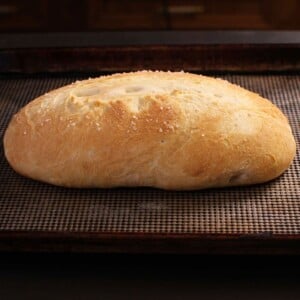
Watch How To Make This
Equipment
Ingredients
- 10 ounces all purpose flour or bread flour – (2 ¼ cups for a single loaf. If doubling the recipe, use 4 ½ cups)
- 1 teaspoon kosher salt -plus ½ teaspoon for sprinkling on top
- 1 tablespoon honey
- ½ tablespoon olive oil – plus 1 tablespoon for brushing over top.
- 6 fluid ounces warm water
- ½ teaspoon active dry yeast
Instructions
- Mix the Ingredients: In a large mixing bowl, combine flour, salt, honey, olive oil, and water. Sprinkle the yeast over the water to dissolve.
- Knead the Dough: If using a stand mixer, start with the paddle attachment and mix on medium speed until the dough begins to come together. Switch to the dough hook and knead on medium speed for about 10 minutes, until the dough is smooth and elastic.If kneading by hand, knead on a floured surface until the dough is smooth and stretchy.
- First Rise: Cover the bowl with plastic wrap and let the dough rise in a warm spot for about 1 hour, or until it doubles in size.
- Deflate and Rest: Turn the dough onto a floured surface and knead gently 4-5 times to release air and redistribute the yeast. Cover with a dish towel and let it rest for 10-15 minutes.
- Shape the Dough: Form the dough into a round boule, an oval, or a 6×3-inch rectangle for a baguette. For a baguette, seal the ends by pressing them down with the heel of your hand. Place the shaped dough on a baking sheet, cover with a dish towel, and let it rise for 1 hour.
- Preheat and Prepare: Preheat the oven to 400°F (200°C). Before baking, make a slash across the top of the loaf with a sharp knife. Brush with 1 tablespoon of olive oil and sprinkle ½ teaspoon of kosher salt on top.
- Bake: Bake for 18-20 minutes, or until the bread is golden brown.
- Serve: Slice and enjoy your freshly baked bread!
Notes
- Using Yeast: This recipe uses active dry yeast, which needs to be dissolved in warm water. If using instant yeast, mix it directly with the other ingredients—no need to dissolve it first.
- Sticky Dough: If the dough feels sticky, sprinkle a little flour on your hands and the surface. Add more flour gradually, one tablespoon at a time, until the dough is smooth and elastic.
- Dough Not Rising: If the dough isn’t rising, check the yeast and water temperature—warm water (not hot or cold) is key. If the room is too cool, let the dough rise in a slightly warm oven. Preheat for 1 minute, turn it off, and place the dough inside, or leave the oven light on for gentle warmth.
- Doughy Bread: Bread that’s doughy in the middle may need more baking time or a slightly higher oven temperature. Tap the bottom of the loaf—it should sound hollow and feel light when fully baked.
- Measuring Flour: For best results, weigh the flour (10 ounces or 285 grams). If you don’t have a scale, fluff the flour, spoon it into a dry measuring cup, and level it off with a knife.
- Combine Ingredients: In a large mixing bowl, stir the ingredients together with a spoon until combined.
- Transfer the Dough: Place the rough dough onto a lightly floured surface, like a counter or cutting board, and shape it into a ball.
- Start Kneading: Use the heel of your hand to gently push the dough away from you.
- Fold and Press: Lift the far edge of the dough, fold it toward you, and press down firmly.
- Add Flour as Needed: Sprinkle a little flour if the dough gets sticky, and continue folding and pressing for about 3 minutes until the dough begins to smooth out.
- Keep Kneading: Continue kneading for 15-20 minutes until the dough is smooth and elastic.
Nutrition
The information shown is an estimate provided by an online nutrition calculator. It should not be considered a substitute for a professional nutritionist’s advice.
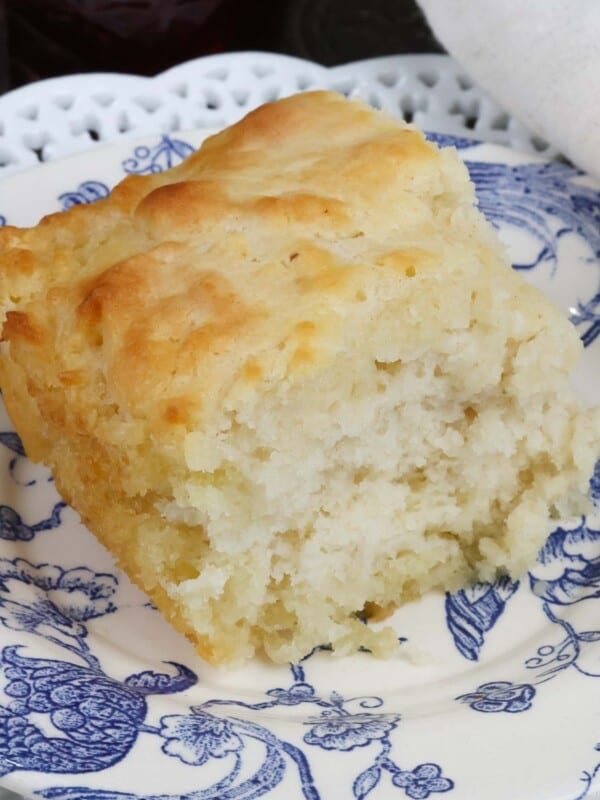
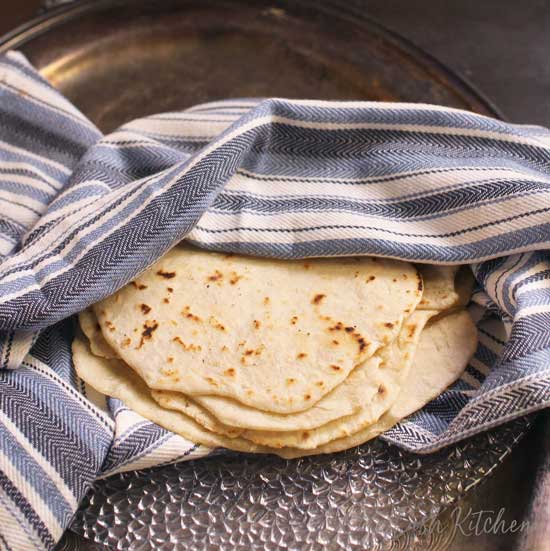

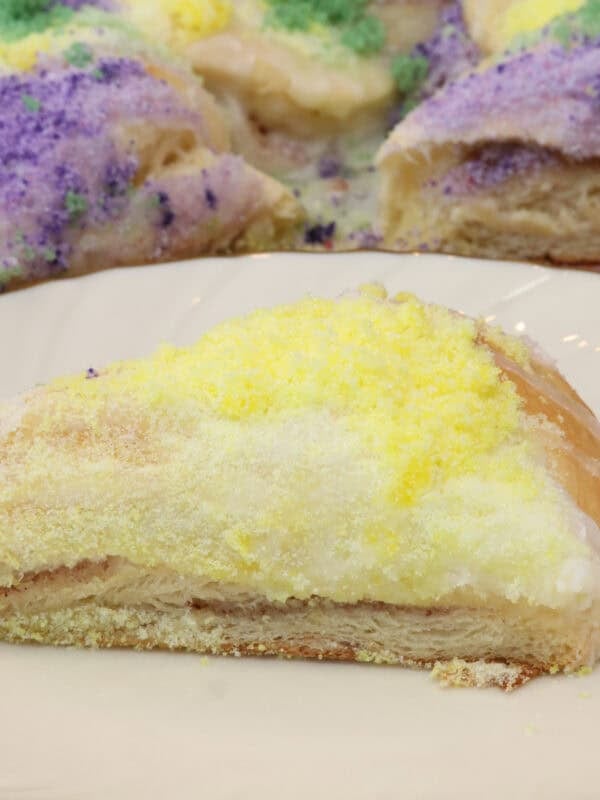
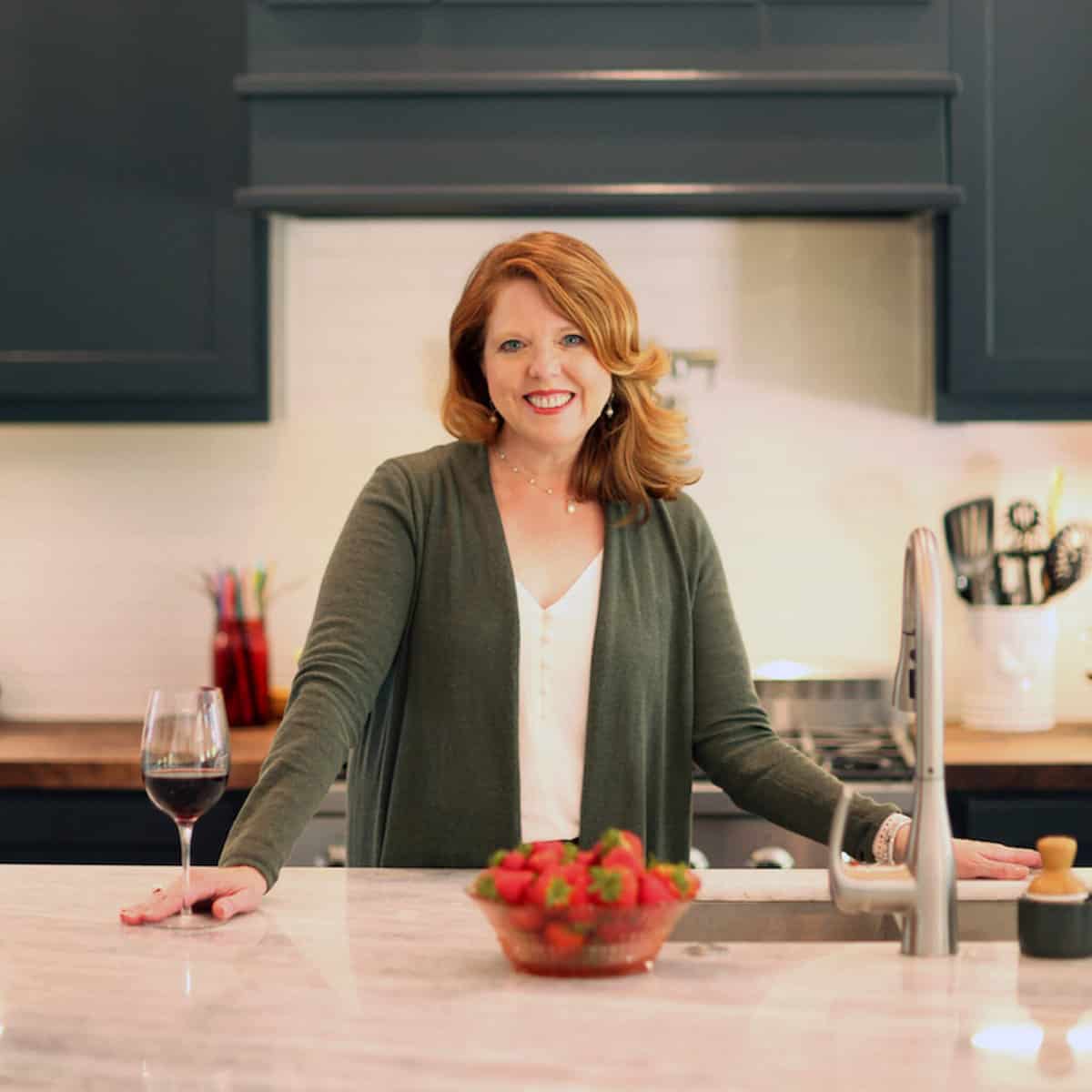
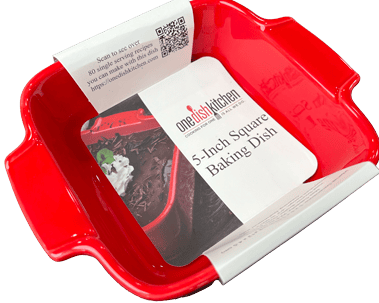








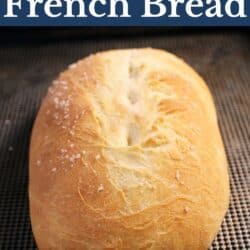
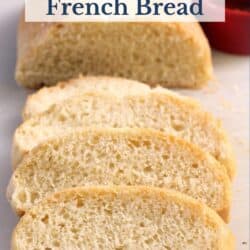
Why would the dough not rise after taking it out of the mixer
If the dough does not rise, it is likely that the yeast wasn’t active. If you’re using active dry yeast, maybe the water you used wasn’t warm enough. Also, dough won’t rise if the room you’re using is too cold. I often put the dough in my oven to rise. To do this, first preheat your oven for 1 minute, turn it off, then place the bowl of dough inside. Make sure the oven doesn’t get too hot or you’ll need to wait for it to cool off. Sometimes, just leaving the light on in your oven will provide enough warmth without turning on the oven.
Joanie, I live in Denver and I am excited to try your bread. Do I need to do anything for high altitude? Thanks Kim
Hi Kim, I don’t have a lot of experience with baking in high altitudes. I encourage you to read over this article on high altitude baking from King Aurthur Baking to see what they recommend doing. https://www.kingarthurbaking.com/learn/resources/high-altitude-baking
Excellent. Absolutely perfect
I made the french bread last night for dinner it was fabulous I well be making this recipe often!
I made this bread in my bread machine where I have a special homemade cycle with only one rise. That way I was able to take the dough out, shape it and let it rise for another hour. And then I baked it in the oven as the recipe indicates. I haven’t put any olive oil on the top but I’ll have to try that next time. And I haven’t scored it either so I’ll give that a whirl as well. My husband loves the bread as do I and it’s the perfect size for the two of us.
Ran out of bread the other day, and made this so kids would have bread for sandwiches in the morning, but it was gone before the end of dinner. So I made a second batch, and doubled the recipe, and it was gone in 24 hr. I made a 3rd batch quadrupling the recipe, and after 2/3 of it was gone by the next day, I finally told my wife I needed her to go to the store and get some more bread… So she did, and she came back with 20lb of flour… This recipe is LITERALLY too good.
Made this – came out great! Perfect for just the two of us.
I make this in my bread machine all the time. (Zojirushi 1 lb mini) I throw all the ingredients into the machine and turn on the dough setting. When that’s done I put the dough into a Lekue silicone bread maker for the final rise and bake. The closed bread maker shapes the loaf and I open it up in the last few minutes of baking to brown the top. It comes out perfectly. In fact, this is my favorite go-to recipe on your site. I love that I can have fresh baked bread in about 3 hours with very little hands-on effort.
Julie,
That Lekue silicone bread maker looks like a fabulous little tool to have. Thanks for mentioning it.
The yeast I had on hand recently expired, but I forged ahead. My mixture raised very little, yet I persisted. I baked my plop of dough and it was delicious! Firm on top and soft inside with small bubbles. So good! Anxious to get fresh yeast and make it again.
Hi Joanie! I discovered your website yesterday and I’m looking forward to giving quite a few of your recipes a try. Since I live alone, I’m always on the lookout for smaller portion recipes.
I do have one quick question about this French bread recipe. It is described as a small loaf, but the recipe says it makes 15 servings. Is that accurate? That seems like a lot of servings for a small loaf. Thanks!
It really depends on how you slice it. This is a small loaf of french bread – the recipe is scaled down from the much larger loaf I’ve made for years.